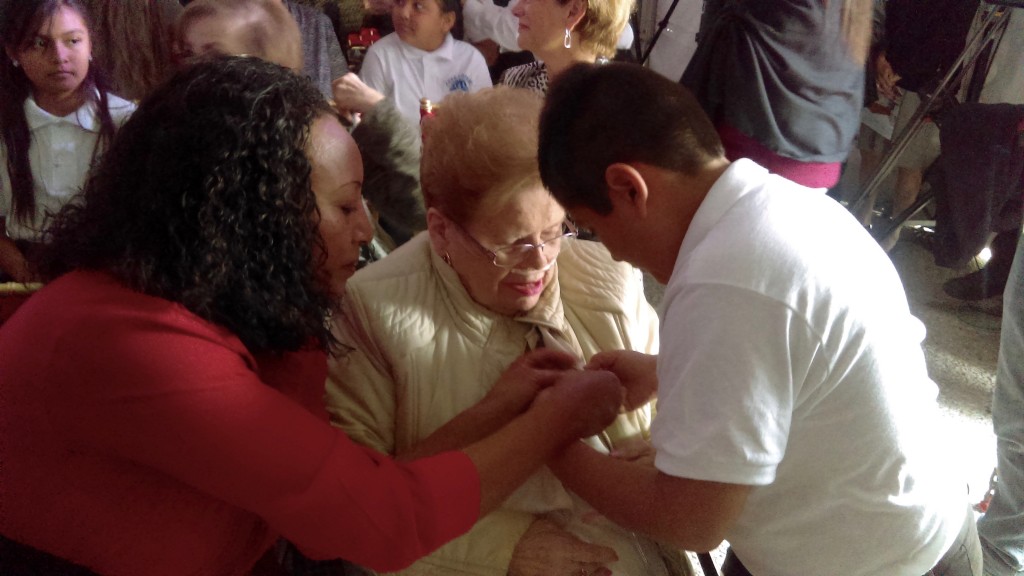Expanded Holocaust Museum Breaks Ground
ArtandSeek.net October 10, 2017 15The Dallas Holocaust and Human Rights Museum broke ground Tuesday at its new location in the West End. The 51,0000-square-foot building is slated to open in the summer of 2019.
That’s more than forty years after a group of local Holocaust survivors set out to establish the current facility located just a few blocks away.
“Their mission and ours — to teach the history of the Holocaust and advance human rights — to combat prejudice, hatred, and indifference has never been more relevant,” said museum president Mary Pat Higgins during the ceremony.

A student from Anne Frank Elementary School places a pin on Holocaust survivor Ruth Altman with help from Elizabeth Abraha during the groundbreaking ceremony. Photo: Miguel Perez
The $61 million project, designed by the Dallas firm Omniplan, will be four times the size of the current building. It’ll include a new theatre, classrooms and 17,000 square feet of exhibition space. Museum officials hope it will eventually help double their annual attendance. Last year, more than 80,000 people visited the museum.
“This will be a place where we can have a discussion about what a thing called human rights is, what diversity really means, what respect for others really is,” said Dallas mayor Mike Rawlings .
Museum board chair and former state senator Florence Shapiro is the child of two Holocaust survivors. Her father was one of the museum’s founders. She spoke tearfully about the ceremony’s theme, l’dor va’dor. The phrase is Hebrew for “from generation to generation.”
To conclude the event, students from Anne Frank Elementary presented local Holocaust survivors with a pin engraved with the phrase.
“[It symbolizes] the torch of hope that we are passing here today from one generation to the next,” Shapiro said. “May our new museum serve as a beacon of hope for future generations — a place for education, a place for learning a gathering place for civil discourse, and, most of all, a place to never forget.”










